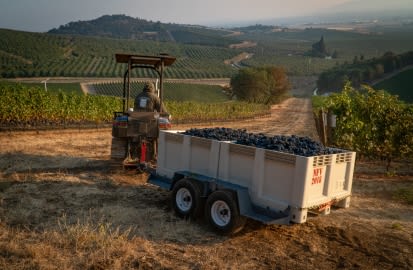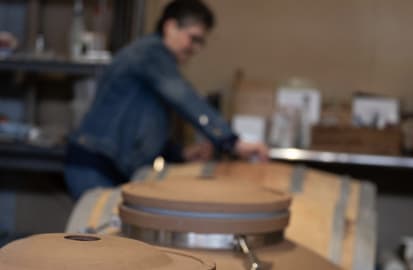Wine
Terroir & Soil Education
November 29, 2022
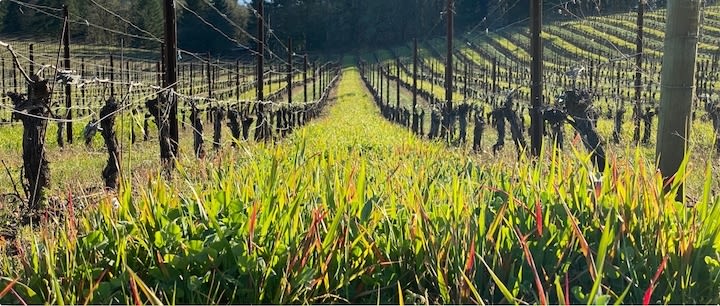
Read a wine’s back label, browse a winery’s website or listen to a wine-industry speaker at an event and you’re likely to learn a wealth of information about the weather of the growing region, the geographical characteristics, and above all, the soil, sometimes referred to with the word terroir.
What’s so special about the dirt under the vines? As with many aspects of wine, the answer is one part science, one part romance. Let’s start with the romance.
What is Terroir?
It’s often said that the French word terroir doesn’t have a precise English translation, but it’s usually defined as “sense of place” or, to use wine writer Matt Kramer’s succinct version, “somewhereness.” There’s no need to limit the concept to wine: If you can taste the difference between an oyster from the Pacific Northwest and an oyster from the coast of Ireland, you can think of that difference as the oysters’ terroir. If you have a preference for peaches from your home state, you might say you prefer your local peach terroir. But great wines are made with the specific goal of showing terroir—of telling you where they’re from, often with a particular set of flavors.
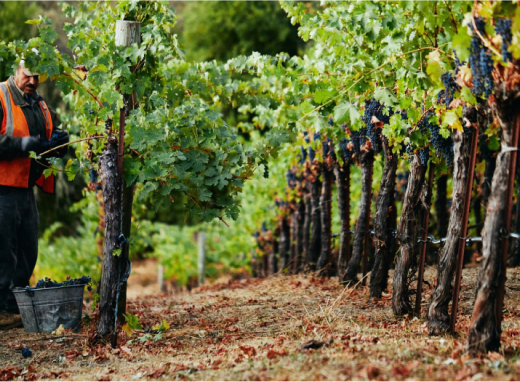
While it can be argued that the impact of culture, tradition and the winemaker’s philosophy on how a wine is made—what I like to call “human terroir”—is just as important as the natural growing conditions, terroir is usually understood to refer to the soil, climate, topography, and features, like forest and mountains, that surround the vines. Soil is often considered to be the most important, for three reasons. Most of the wine production world can agree on the first two, while the third is more controversial.
Soil directly impacts water availability
There is no wine without water. Vines have fairly low water needs, and you may have heard that they grow better wine when they’re struggling a little. The “struggling” involves forcing their roots down deeper in search of water, which many winemakers believe leads to better concentration of flavor—not to mention healthier, more drought-prone vines.
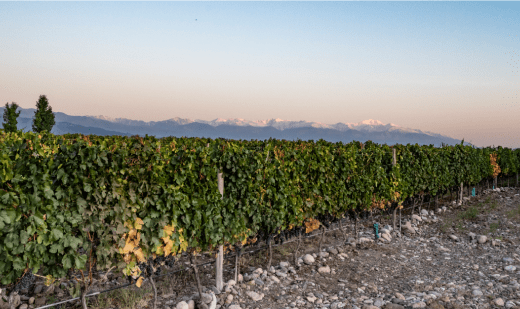
Vines do need some water to survive, though, and it’s not enough to simply receive rain or irrigation: the soil around the vine needs to handle the water appropriately. Have you ever forgotten to water your houseplant for weeks, finally tried to water it, and helplessly watched the water run off the surface without ever getting absorbed? That’s not good for houseplants or vines. At the other extreme, grapevines need adequate drainage so their roots don’t soak, and to promote that struggling effect in the case of high-quality wine.
When deciding where to plant a vineyard, viticulturists look for a balance between sufficient water-holding capacity and drainage. In a drought-prone climate such as Napa, they’ll be concerned primarily with the quality and quantity of local water sources, and may wish to add organic matter to the soil (like compost) or cover crops (the plants you might see between the vine rows) to improve water-holding capacity.
In a climate with more rain, like the Willamette Valley, the ideal site would be likely to have a slope so that the extra water drains easily. In all cases, a vine with access to adequate, but not excessive, water will produce healthier, more concentrated grapes that translate directly to better wine.
Soil health is critical to vine health.
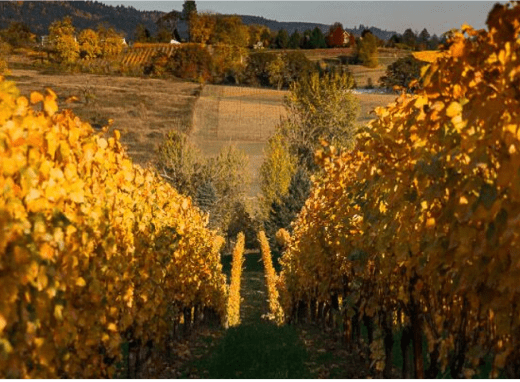
Just like humans, vines need a series of macronutrients and micronutrients, and their roots are the delivery system for this critical nutrition. Nitrogen, for example, assists in healthy fermentations and supports the overall health of the vine, while phosphorus is essential to photosynthesis. Vineyard owners (and prospective vineyard buyers) can take soil samples and send them to labs for analysis in order to determine whether the soil on the property has the necessary nutrients to support healthy vines. They can make adjustments to the soil in the form of sprays, compost and other additions, and they’ll monitor these nutrient levels throughout the life of the vineyard.
Soil health also refers to the presence or absence of root pests such as phylloxera and nematodes. Some soil types are inhospitable to these tiny, vine-destroying creatures—sandy soil, for example, is phylloxera’s nemesis. If you encounter a winery with 100-year-old vines, it’s likely those vines are growing in a soil type where phylloxera has never had a chance to take hold. A healthy vineyard has the opportunity to grow old and, many winemakers believe, produce fruit with more concentrated and intense flavors than what is possible at younger sites.
Soil is sometimes thought to contribute unique flavors to wine.
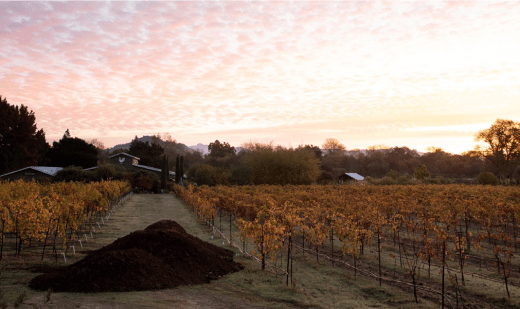
Winemakers in Priorat will often speak of the distinct flavors in their wines that come from their famous llicorella soils. Riesling lovers are told that the slate found in the legendary Mosel region can be tasted in the glass. Such connections are the heart of what we talk about when we talk about terroir—the sense of place, as opposed to the inherent flavors of the grape or the winemaking style.
Fascinatingly, we do not know how, or even if this works. There does not appear to be a mechanism for the vine’s roots to take up flavor from soils and transfer that flavor to the grapes. The actual, chemical source of every common flavor in wine is an exciting topic of recent and ongoing research. Meanwhile, one theory on the transfer of specific flavors from place to glass is that some flavors actually come from ambient yeast in the vineyard.
While scientists work on pinpointing the many sources of flavor in the things we eat and drink, wine lovers and many sommeliers and wine writers are nevertheless able to pick out flavors in wine that provide clues to the soil that grew the grapes, often using the term minerality to describe the general flavor or texture of something earthy but not fruit-driven. “Wet stone,” “pencil shavings,” and “gravel” are all examples of common wine descriptors that fall into the category of minerality. (Admittedly, they can sound a little bizarre—until you smell and taste them for yourself in the glass!)
One thing’s for certain: the impact of soil on wine is both paramount and complicated. Ask ten winemakers how their own soil influences the flavor in their wines, and you could get ten different responses. But we know that the right soil conditions will grow healthy grapes, and healthy grapes have balance, concentration and flavor—the building blocks of great wine.
